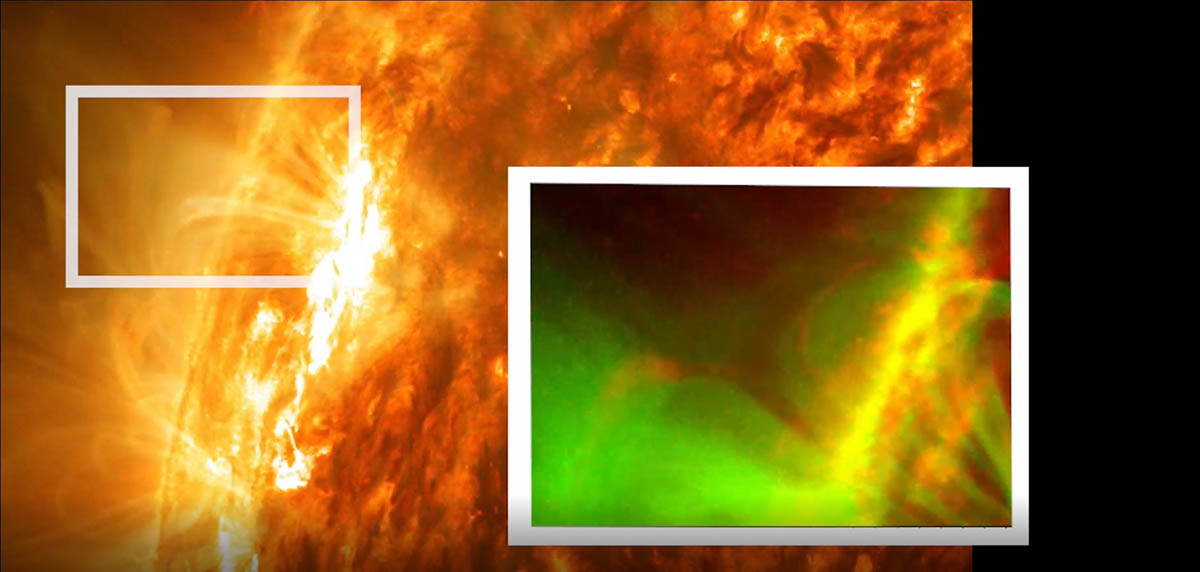Forced magnetic reconnection, caused by a prominence from the Sun, was seen for the first time in images from NASA’s Solar Dynamics Observatory, or SDO. This image shows the Sun on May 3, 2012, with the inset showing a close-up of the reconnection event imaged by SDO’s Atmospheric Imaging Assembly instrument, where the signature X-shape is visible. (NASA/SDO/Abhishek Srivastava/IIT(BHU))
Home Forced magnetic reconnection, caused by a prominence from the Sun, was seen for the first time in images from NASA’s Solar Dynamics Observatory, or SDO. This image shows the Sun on May 3, 2012, with the inset showing a close-up of the reconnection event imaged by SDO’s Atmospheric Imaging Assembly instrument, where the signature X-shape is visible. (NASA/SDO/Abhishek Srivastava/IIT(BHU)) Forced magnetic reconnection, caused by a prominence from the Sun, was seen for the first time in images from NASA’s Solar Dynamics Observatory, or SDO. This image shows the Sun on May 3, 2012, with the inset showing a close-up of the reconnection event imaged by SDO’s Atmospheric Imaging Assembly instrument, where the signature X-shape is visible. (NASA/SDO/Abhishek Srivastava/IIT(BHU))
Forced magnetic reconnection, caused by a prominence from the Sun, was seen for the first time in images from NASA’s Solar Dynamics Observatory, or SDO. This image shows the Sun on May 3, 2012, with the inset showing a close-up of the reconnection event imaged by SDO’s Atmospheric Imaging Assembly instrument, where the signature X-shape is visible. (NASA/SDO/Abhishek Srivastava/IIT(BHU))



